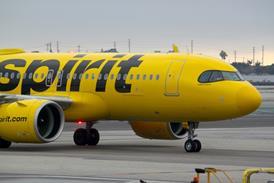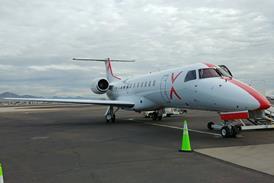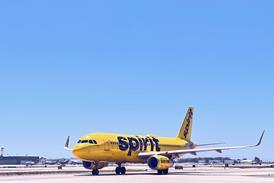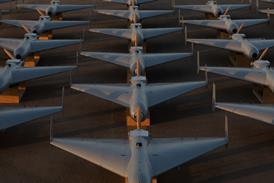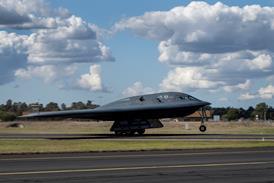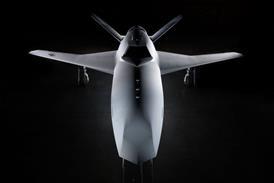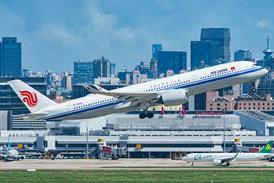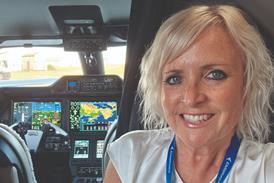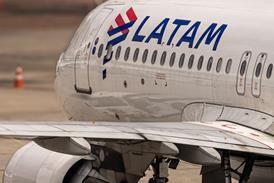The airline industry ended 2001 with the worst results on record and while US carriers were worst hit, the damage is evidence across the world's airline groups
This year's financial ranking of the top 150 airline groups simply confirms what everyone had already feared. The industry ended 2001 showing unprecedented losses and the figures best speak for themselves. The collective net loss soared to a record $12.6 billion, effectively wiping out two years of hard-won profits at a stroke and dwarfing even the $8 billion of losses which followed the Gulf War a decade ago.
Perhaps the most telling statistic is that the industry, for the first time in recent memory, showed a heavy loss at operating level at close to $6 billion. Even back in 1992, when net losses last spiked, the industry had managed to show a modest operating profit before the impact of write-downs and provisions. Revenues also dropped sharply, falling overall by more than 5% once the impact of the demise of Swissair and Sabena are factored into the equation. That translates into a shortfall of more than $18 billion for the year.
Most of the damage, of course, stems from the events of 11 September, but not all. "The warning signs were there from mid-year onwards," in the parting words of outgoing IATA director general, Pierre Jeanniot. IATA, in common with others, had been predicting a modest annual profit for the industry at the start of 2001. As the year wore on and the world economy weakened, that had already been revised to "fairly large losses", says Jeanniot. After 11 September all bets were off. With the US economy still showing few signs of life, the outlook for 2002 remains poor. Today IATA's best estimate is to see losses halve this year.
The nine mainline US majors sank to their worst ever net loss of over $7.3 billion for the year, with $3.2 billion of that in the disastrous final quarter. The US federal grants took only a little edge off the figures and were all but cancelled out by a series of massive write-downs against surplus aircraft taken in the wake of the traffic collapse. Equally damning are figures coming from the US Department of Transportation which put return on assets by US carriers at -7% for 2001, marking a precipitous drop from the 1% positive figure for 2000.
Overall, North American carriers in the 2001 ranking racked up the lion's share of the misery, posting a collective net loss of $8 billion despite a solid performance from the cargo and low-cost sectors. Some names have already disappeared from the list, including the enlarged Canada 3000, which failed to mount its promised threat to Air Canada on international routes, and TWA, snapped up by the American Airlines group. US second tier players such as Vanguard, Sun Country and Midway Airlines have also run into trouble, while America West was kept afloat thanks to federal aid. US Airways has since filed for bankruptcy after failing to get similar funds, and questions remain over United Airlines. Both top the rank of last year's highest losses.
US warnings
Looking back over the year, it is clear that the rot had set in well before 11 September. Early in the year analysts had already been warning of pending losses from a dangerous cocktail of slow economic growth, tightening corporate travel budgets and rising labour demands. Some of those problems were already building back in 2000 when the majors, still flush with profits, agreed to the hefty wage rises being pushed for by their pilot unions.
Sam Buttrick, analyst at UBS Warburg, was among those who warned as early as May that pilot settlements, led by the United Airlines deal, were "frankly, out of control". Jamie Baker, analyst at JP Morgan, notes that revenue trends during this period reached their weakest point in more than a decade.
Pessimists believe that the outlook for this year is for losses of at least $5 billion among the US majors. Even optimists are wary of suggesting more than break-even in 2003, with meaningful profits now put on hold until 2004.
However, while the traditional carriers have suffered, so the low-cost start-ups have again come into their own during the recession. Southwest still managed to lead the profits league and with a comfortable double-digit operating margin, while start-up JetBlue was not far behind despite its breakneck growth. Their European counterparts too have continued to storm ahead, with Ryanair again producing the world's best margins. Its soaring share price left it the most valuable airline in Europe after the Lufthansa Group.
Despite low-cost profits, Europe as a whole ended the year showing a net loss of $2.5 billion, with revenues off by close to 5%. That deficit admittedly includes a massive provision from the Lufthansa Group against its catering business - a casualty of the US downturn. But there were losses even at operating level.
Within the region, however, the results have been far from even. The struggle to keep the former SAir empire afloat became futile after September, leading to the demise not only of Swissair, but also Sabena and the combined AOM/Air Liberte. All three have risen from the ashes, as Swiss (helped by a government-supported $1.4 billion cash injection), SN Brussels and Air Lib. Other carriers have sailed close to the wind, with Greek flag carrier Olympic still the subject of an investigation by Brussels into illegal state aid.
Those with the heaviest exposure on the North Atlantic have clearly suffered hardest, with figures on the route at their worst for a decade even before 11 September. Aer Lingus, which has relied heavily on its US links, is still undergoing a painful restructuring having had its request for government assistance turned down by Brussels. British Airways, which had around 40% of its seat capacity across the Atlantic and was also the first flag carrier to face the brunt of the low-cost onslaught, saw an operating profit turned to loss. Elsewhere SAS also had to grapple with a messy boardroom shake-up and a sharp downturn in the telecoms market which severely hit the Scandinavian business-class market.
However, there were bright spots in Europe too. Air France rode out the storm more successfully than most, partly reflecting the fact that it is still gaining market share lost in the troubled mid-1990s, aided by its alliance with Delta Air Lines and its Paris hub. It has also gained more than most from the collapse of Swissair and partners, but behind all this lies a successful reworking of the business by the management team since the dark days of a decade ago. The same is true of Spanish flag carrier Iberia, which underwent a successful privatisation last year despite the turbulence in the industry and some of its main markets in Latin America. Like BA a decade before, both groups appear to have hit the downturn with their houses already in order.
Asian hopes
By far the best news comes from the Asia-Pacific region, which continued to show operating profits even if the net result slipped into the red. The fall-out from the US terrorist attacks was weaker in the region, although the impact has been felt, as demonstrated by the fall in revenues for 2001.
The low point came with the collapse of Ansett as Air New Zealand's grand ambitions fell to pieces, leaving it to be rescued by its government. Singapore Airlines, despite being an investor in that venture, nevertheless managed to keep its record of unbroken profits intact and stay among the world's top earners.
The Chinese groups largely kept their profits on course spurred on by a domestic economy which remained somewhat insulated from the crisis. Although there was no shortage of red ink elsewhere in the region, many Asian carriers nevertheless beat analyst estimates, and are more confident than their US and European counterparts of recovery prospects for the current financial year.
However, for carriers everywhere these remain the worst of times. In the words of Jeanniot: "In contrast to the 1991 situation, individual airlines do not have a choice as to when they become profitable; the spectacular demise of even world-famous carriers points up the unforgiving climate in which airlines now do business."
REPORT BY COLIN BAKER IN LONDON
Source: Airline Business

